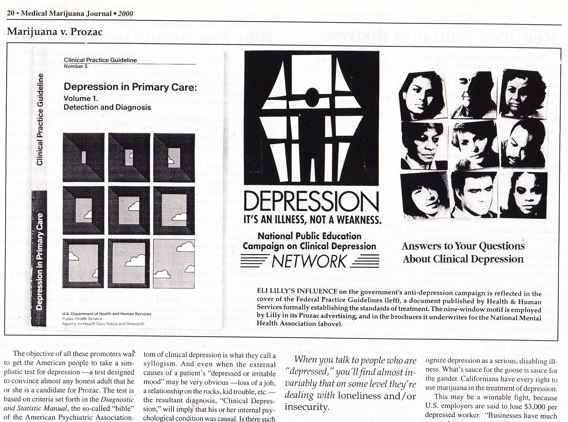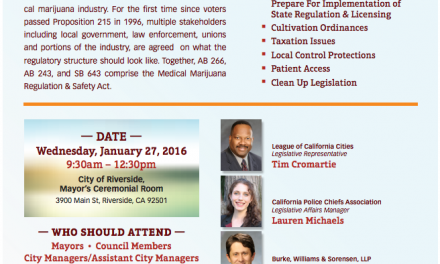Muckraking is an exercise in futility. The exposés get published, the authors may or may not get rewarded for their research and risk-taking, the evil-doers might have to slow down. But in due course the evil-doers resume rolling merrily along and the exposé achieved little or nothing.
Consider the Prozac example. Two years after Eli Lilly began marketing the first “Selective Serotonin Reuptake Inhibitor” antidepressant, St. Martin’s Press —a major publishing house— brought out “Toxic Psychiatry” by Peter Breggin, MD. The book thoroughly exposed pro-corporate bias in the FDA drug-approval process and listed the known adverse effects of SSRIs. (There was no data on the long-term risks, obviously.)
Breggin was not a lone voice crying in the wilderness. Prozac was often in the news as the apparent cause of bizarre homicides and suicides. Lawsuits by victims and survivors were filed against Lilly and generated negative publicity. In 1997 Harvard University Press brought out “The Anti-Depressant Era” by David Healy, which exposed how Lilly had actually been marketing “Clinical Depression” as a medical disorder. (We’d been making this point in the AVA). The disorder supposedly resulted from a “chemical imbalance in the brain” that could be corrected by medication prescribable by MDs.
Maybe the revelations of Breggin, Healy and other naysayers cost Lilly a few sales. But as of 2018, when last the CDC released its data (and before the pandemic pushed rates up) nearly 18% of all adult women in the US were on antidepressants —and just over 8% of men.
“Why Your Antidepressants Seem to Stop Working—and What to Do” was the hed on a recent Wall St. Journal piece. Reporter Andrea Petersen led with the same active voice: “You’ve been on the same antidepressant for years. Then suddenly, the medication seems to stop working,”
For old times’ sake I read on: “Symptoms such as persistent sadness and a loss of interest in favorite activities resurge. Identifying the right solution can be difficult and largely trial-and-error: Some patients may need a higher dose of the same medication, while others may need to try a new drug or a new combination of drugs, doctors say.”
Nothing had changed, although Ms Petersen seemed to think she was onto a newly emerging pattern: “There are no statistics on how frequently antidepressants seem to suddenly fail in people who had been doing well on them,” she wrote. “But psychiatrists say they see it fairly regularly.
“’It is a real phenomenon,’ says Charles B. Nemeroff, chair of the department of psychiatry and behavioral sciences at the University of Texas at Austin’s Dell Webb Medical School and president of the Anxiety and Depression Association of America.”
A real phenomenon that’s as old as the marketing of Prozac. Eli Lilly funded the studies establishing the safety and efficacy of Prozac —and didn’t have to share data from studies in which Prozac failed. That’s how the drug-approval process works.
Petersen tells us, “Scientists aren’t certain exactly why psychiatric drugs appear to lose effectiveness for some patients.” (Meaning, after all these years they can’t quite measure the impact of the chemical bombs they dropped in people’s brains.) ” There’s some evidence that long-term antidepressant treatment may reduce the number of serotonin receptors in the brain, says Dr. Nemeroff.”
If Dr. Nemeroff acknowledges “some evidence” and that SSRIs “may reduce” serotonin levels, there’s probably overwhelming evidence that Prozac et al significantly reduce your serotonin levels. Petersen of the WSJ didn’t ask Dr. Nemeroff the obvious follow-up questions: the extent of the damage, whether it was reversible, and which areas of the brain are involved. Maybe she did ask and just didn’t share the answers. If the cause of suspected brain damage had been marijuana use, you could count on keener coverage.
The National Institute on Drug Abuse has spent hundreds of millions of taxpayer dollars trying to find marijuana-induced brain damage, and they have impressed their dire warnings on physicians and the public. Stacey Gruber, PhD, became a top neoprobe star in 2015 when she published “Marijuana Use Predicts Cognitive Performance on Tasks of Executive Function” and impressed Sanjay Gupta with ominous colorized brain activity.
But pot partisans can take heart: in the Most Downplayed Story of 2015, Dr. Barbara J. Weiland and colleagues at the University of Colorado and the University of Louisville reported that marijuana use does not cause lasting changes in the brain.
Andrea Petersen’s WSJ story could have run 25 years ago, word for word. “It can take weeks for a change in dosage or medication to bring relief. New side effects, such as increased anxiety or insomnia, can emerge. And each relapse of depression makes additional relapses more likely. People who have had one episode of depression have a 50% chance of having another, while those who have two episodes have an 80% chance of having another.”
In other words, you’re probably going to be using this stuff for the rest of your life, don’t complain when it fails, if you’re lucky you’ll have long periods of remission.
One new wrinkle to the Prozac story: the pandemic has been great for business. “Getting the medications right is especially important now as mental health problems have surged during the pandemic. About 23% of American adults reported symptoms of a depressive disorder and 28% reported symptoms of an anxiety disorder, according to a survey by the Centers for Disease Control and Prevention conducted in December and January. The percentages are a big increase compared with the 6.5% of American adults who said they had symptoms of depression and the 8.1% who had symptoms of anxiety disorders in 2019, according to the CDC.
“More people are taking antidepressant medications. The number of prescriptions for the most common antidepressants increased to 224 million in 2021 from 216 million in 2019, according to data from health-research firm IQVIA.”
The fact that marijuana can be a very effective anti-depressant —and our corporate masters now know it for sure— is why the retail cannabis outlets were allowed to stay in business throughout the pandemic. Cannabis is SOMA and this certainly is a brave new world we’re living in.





